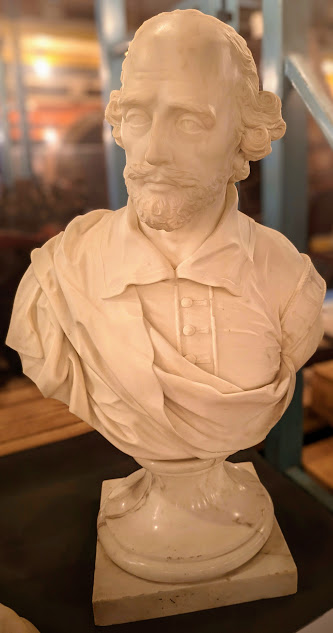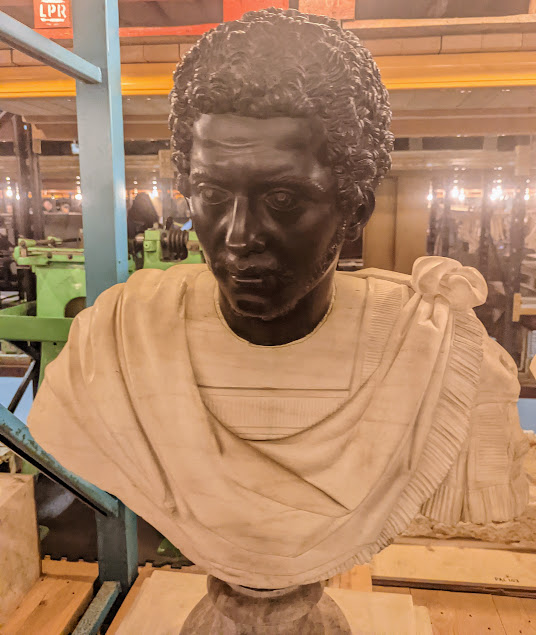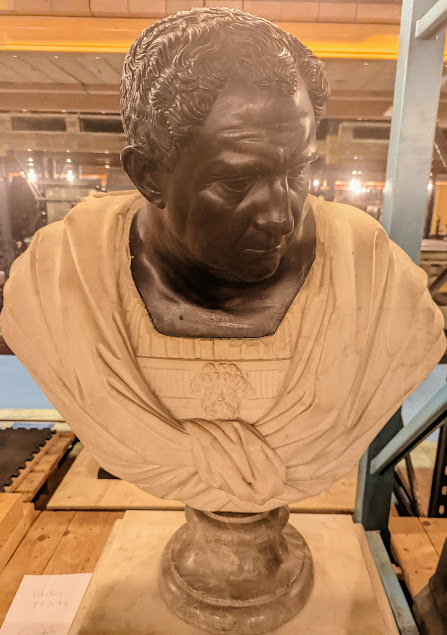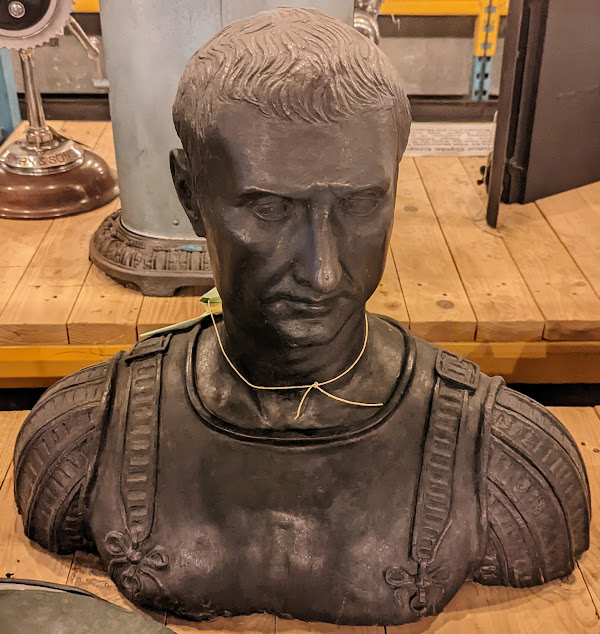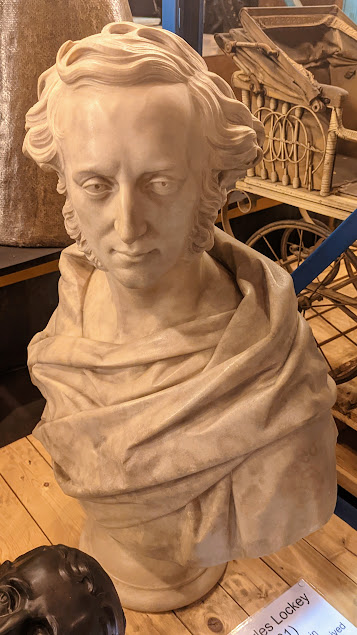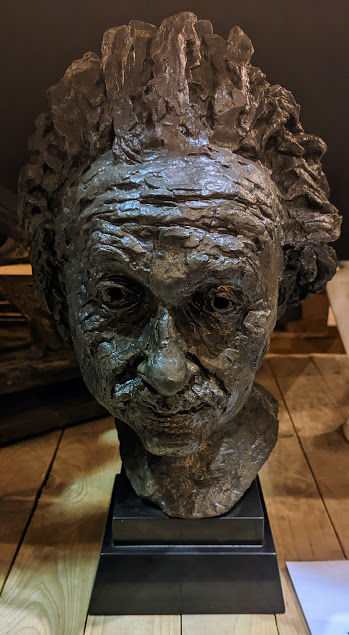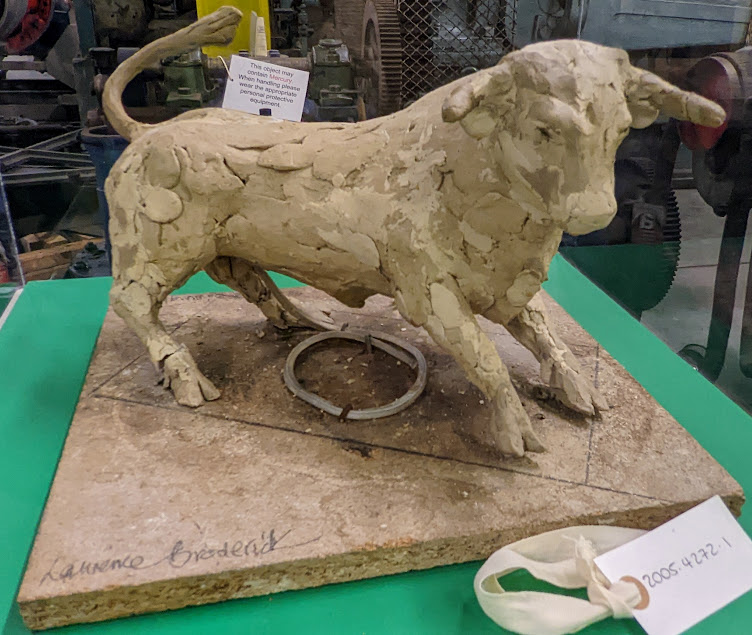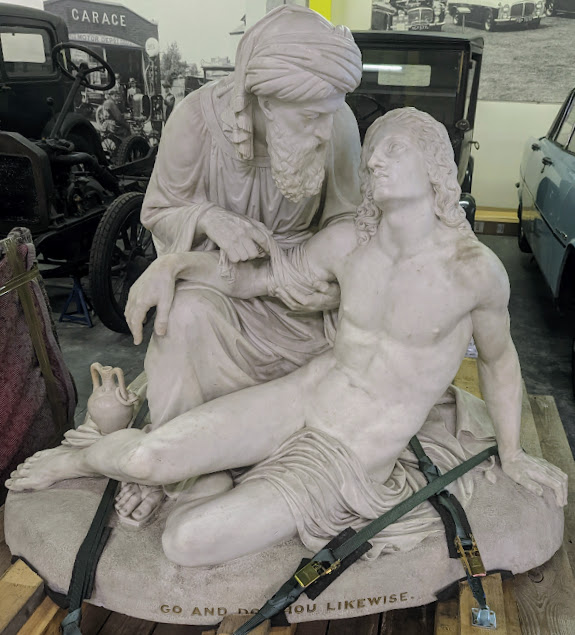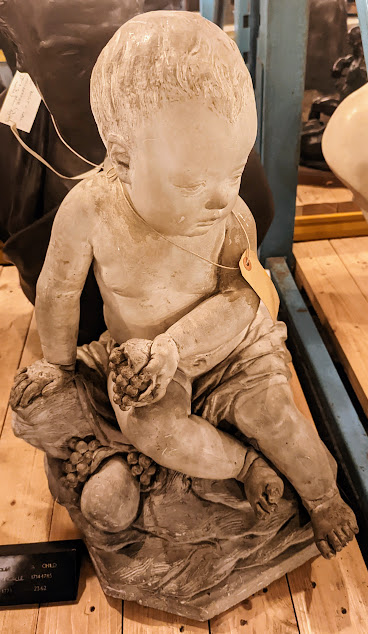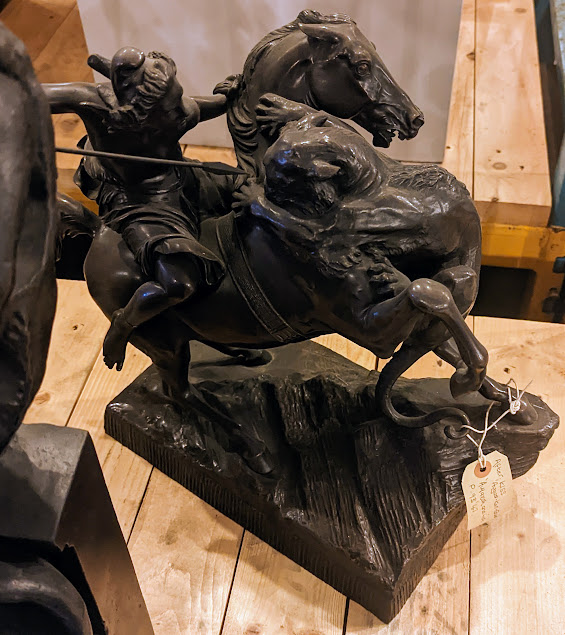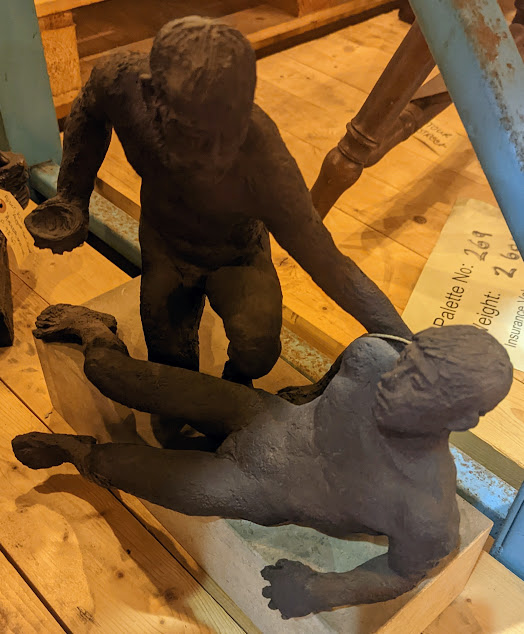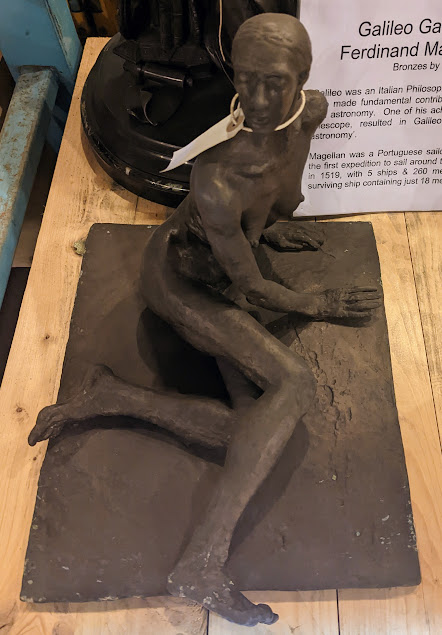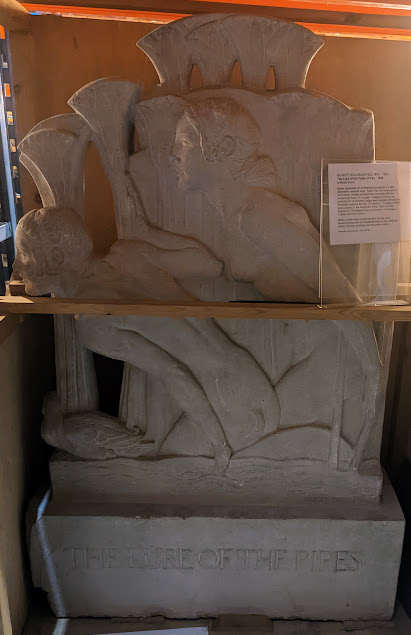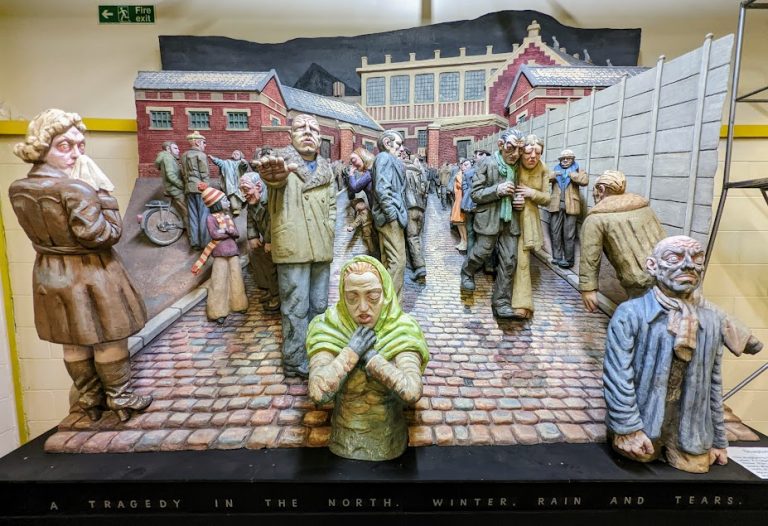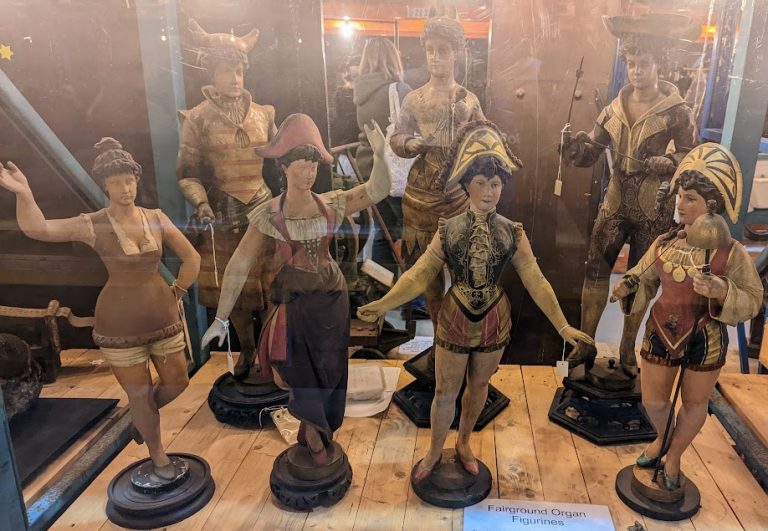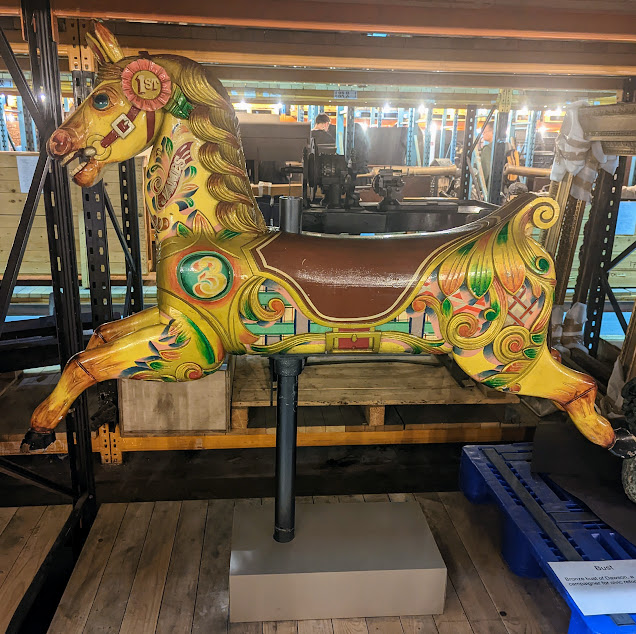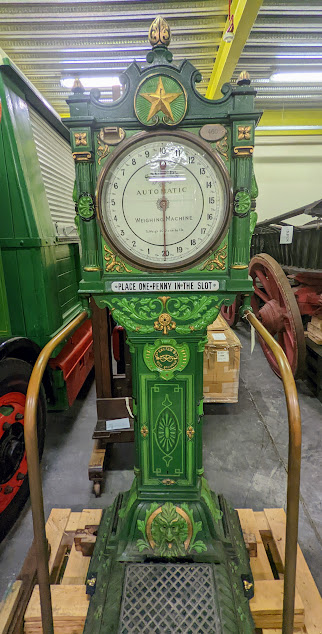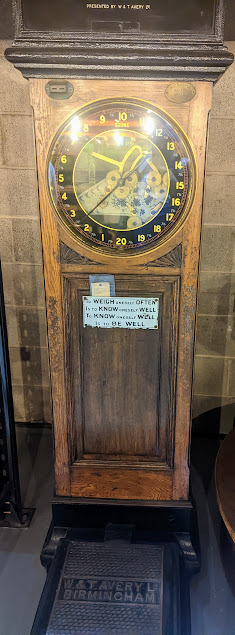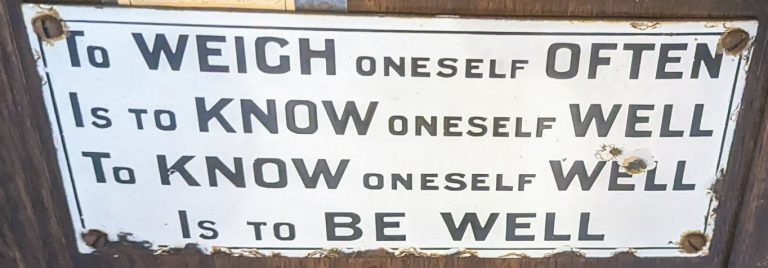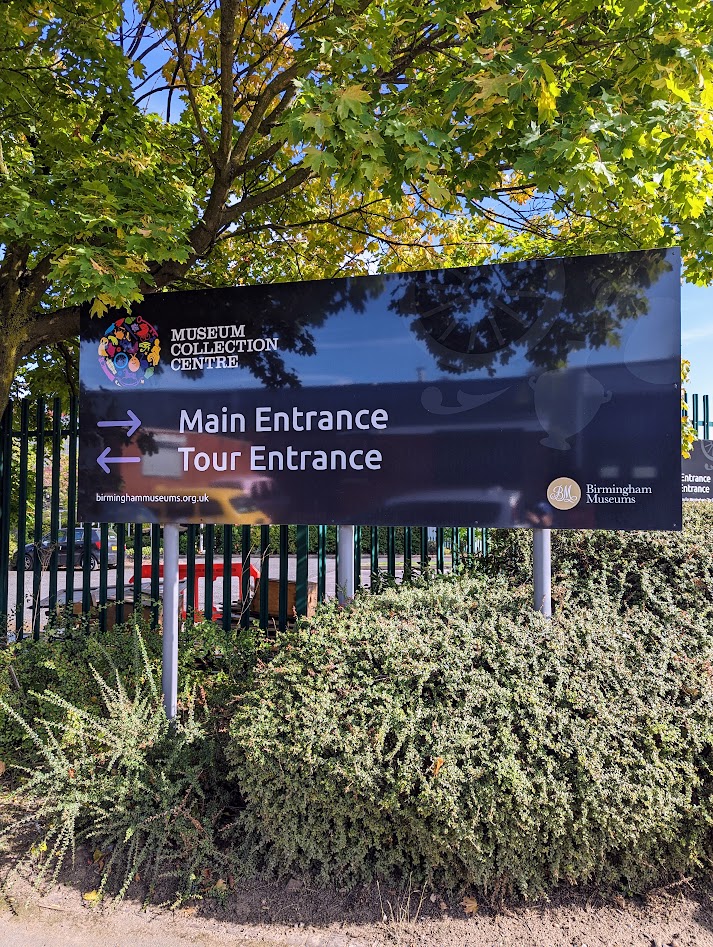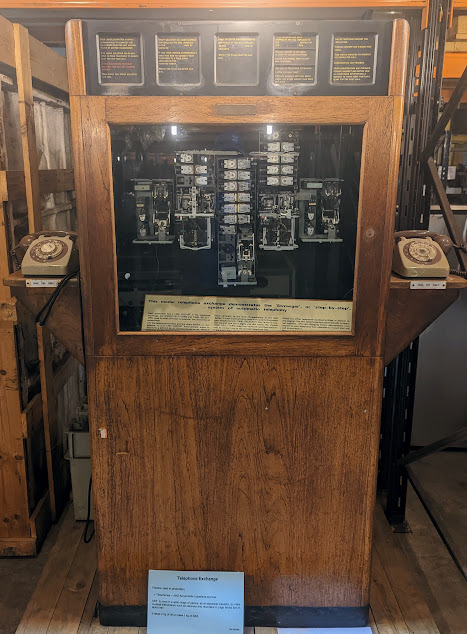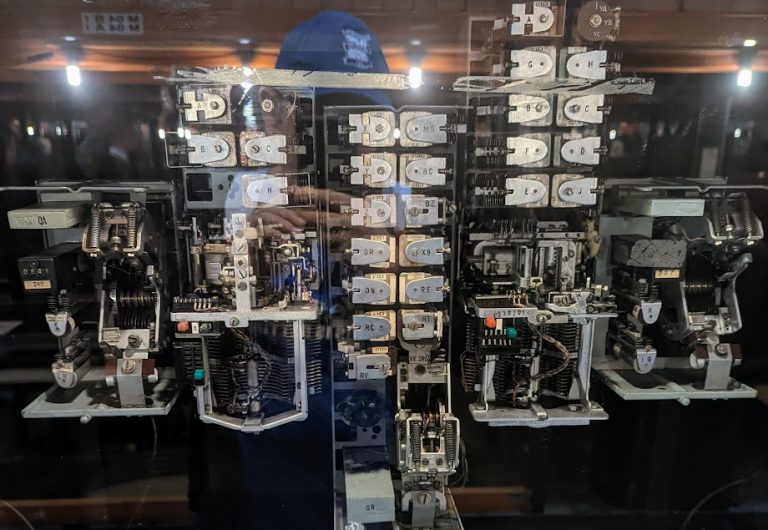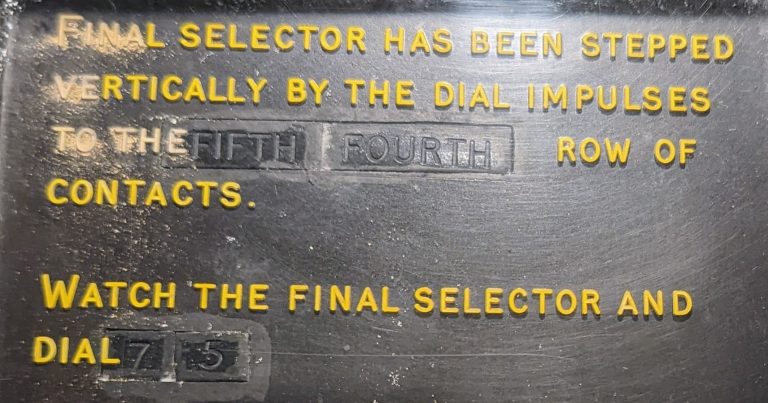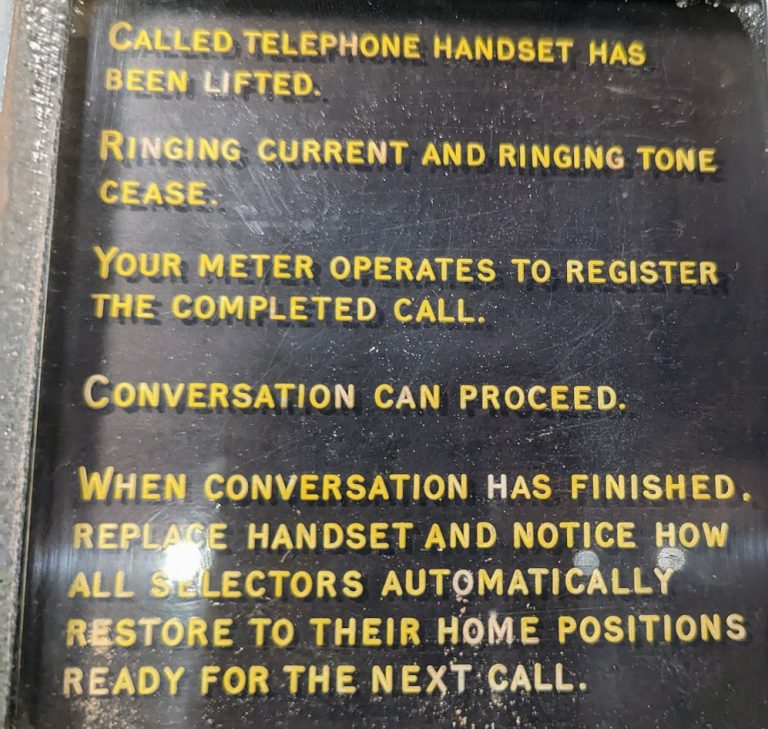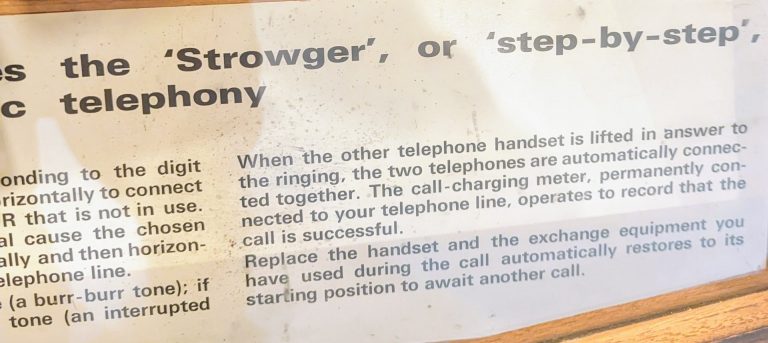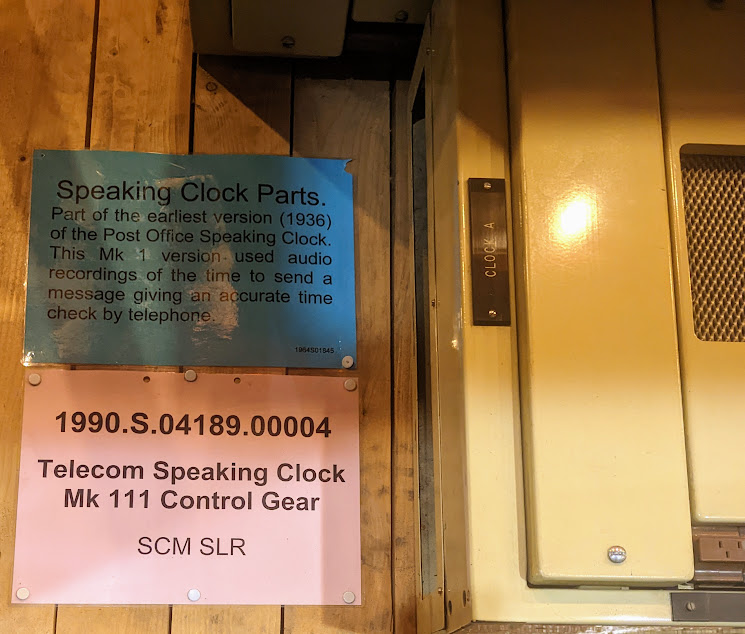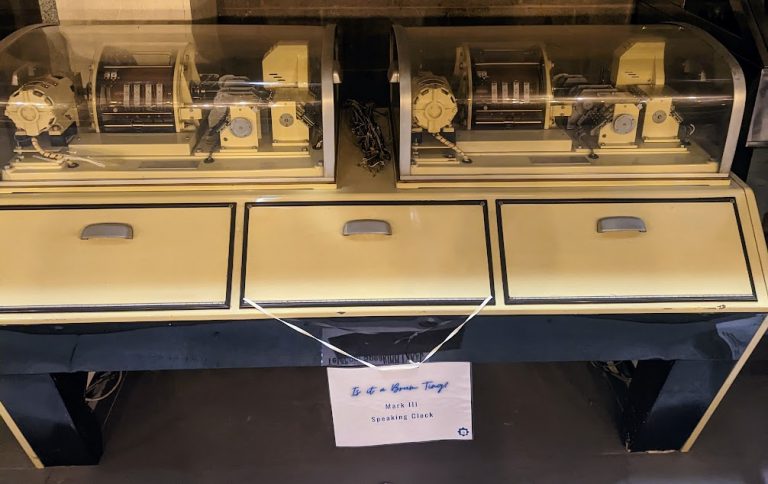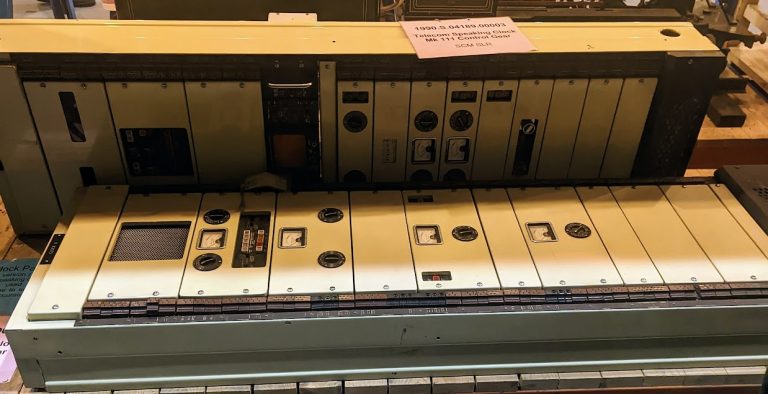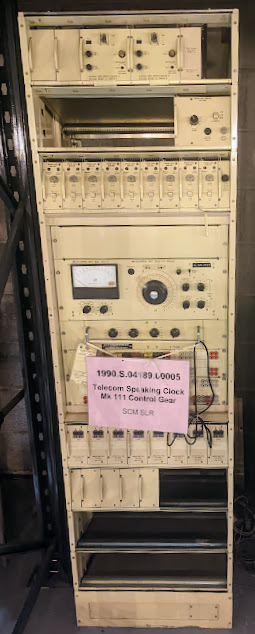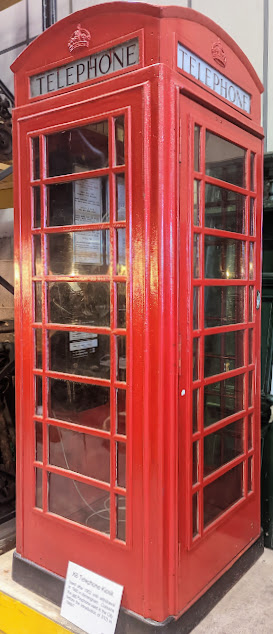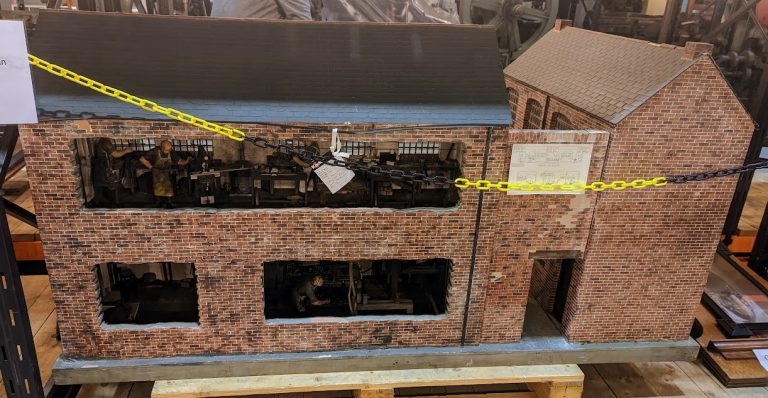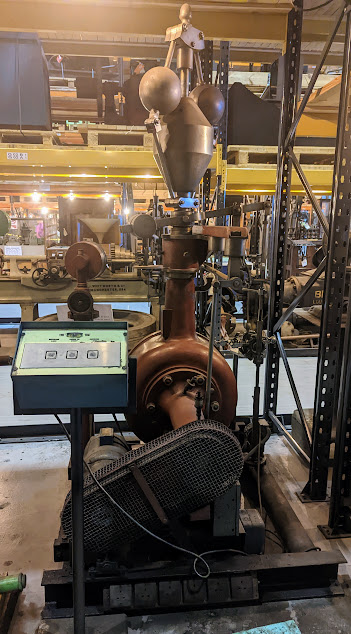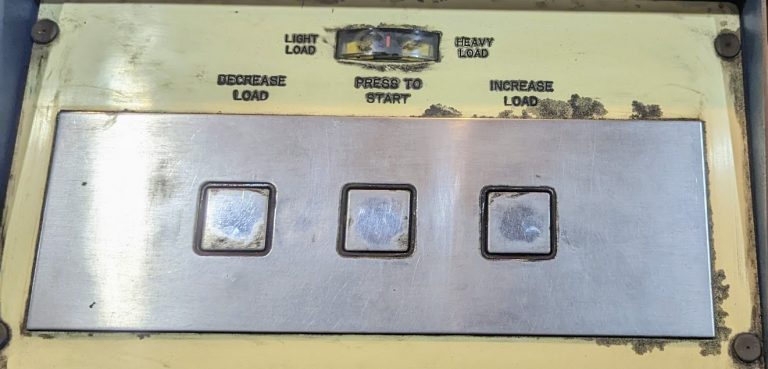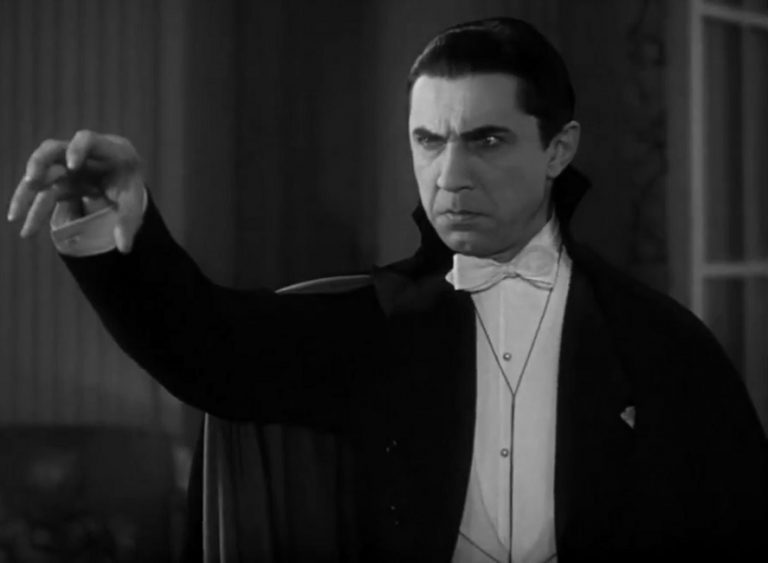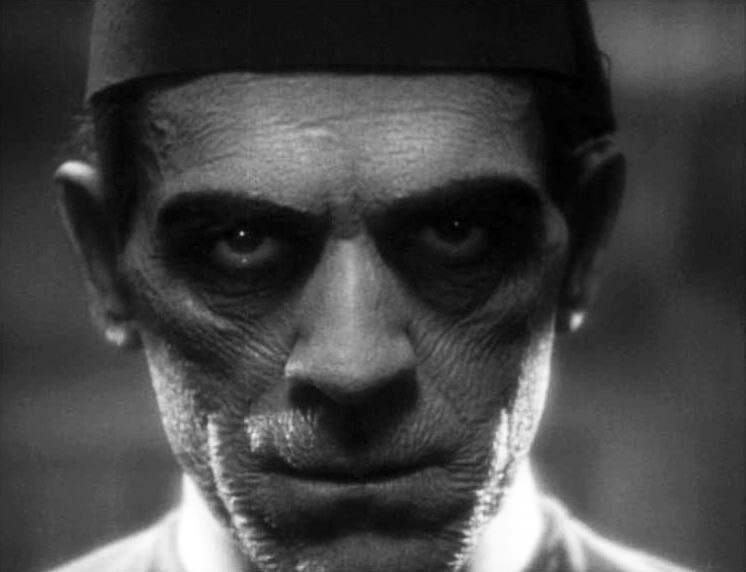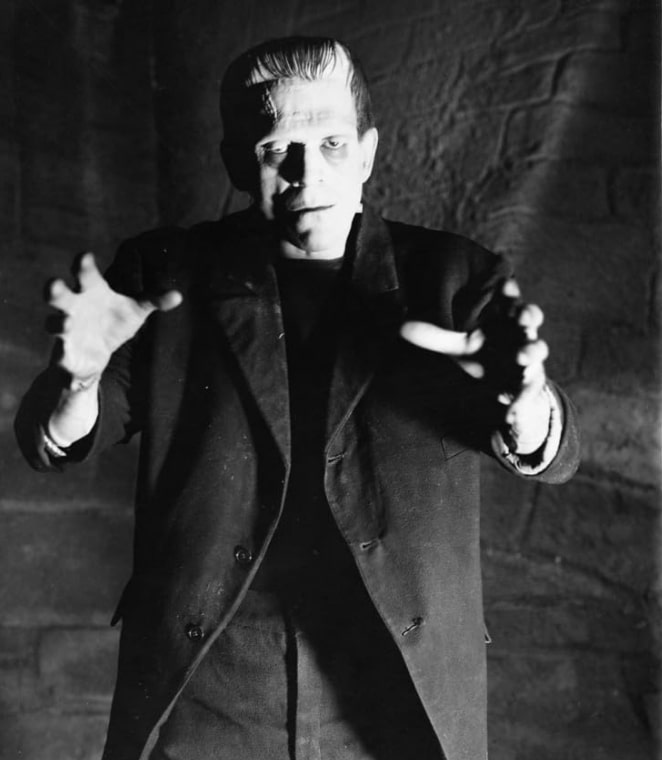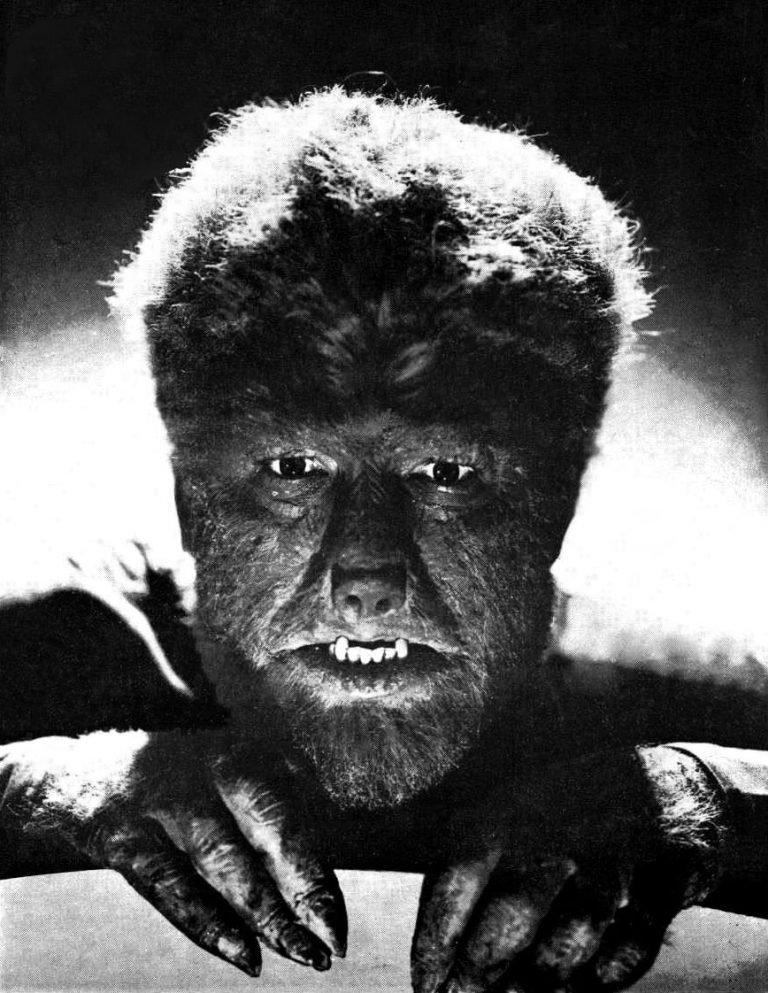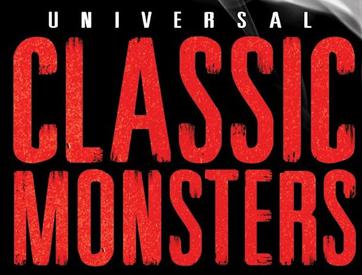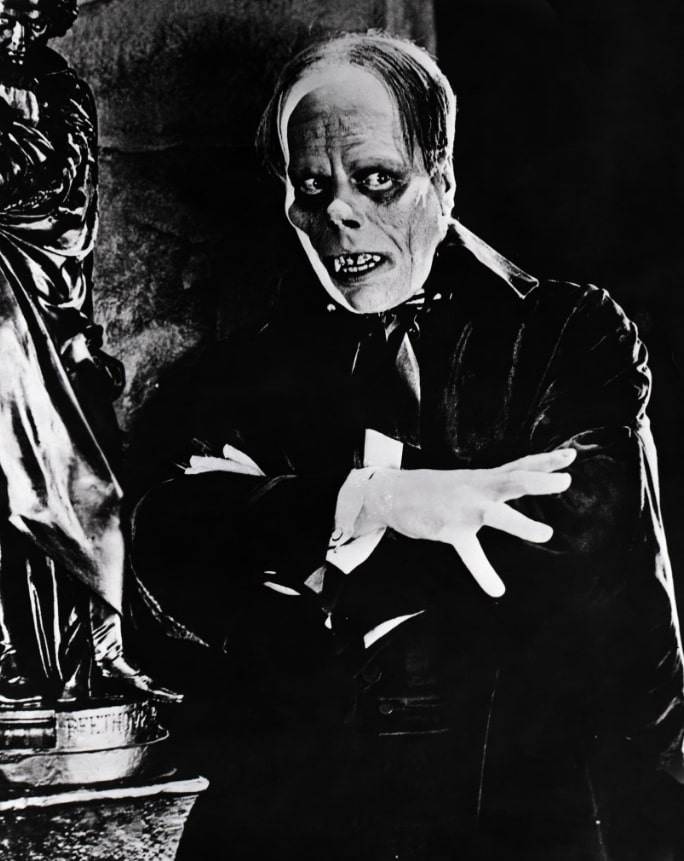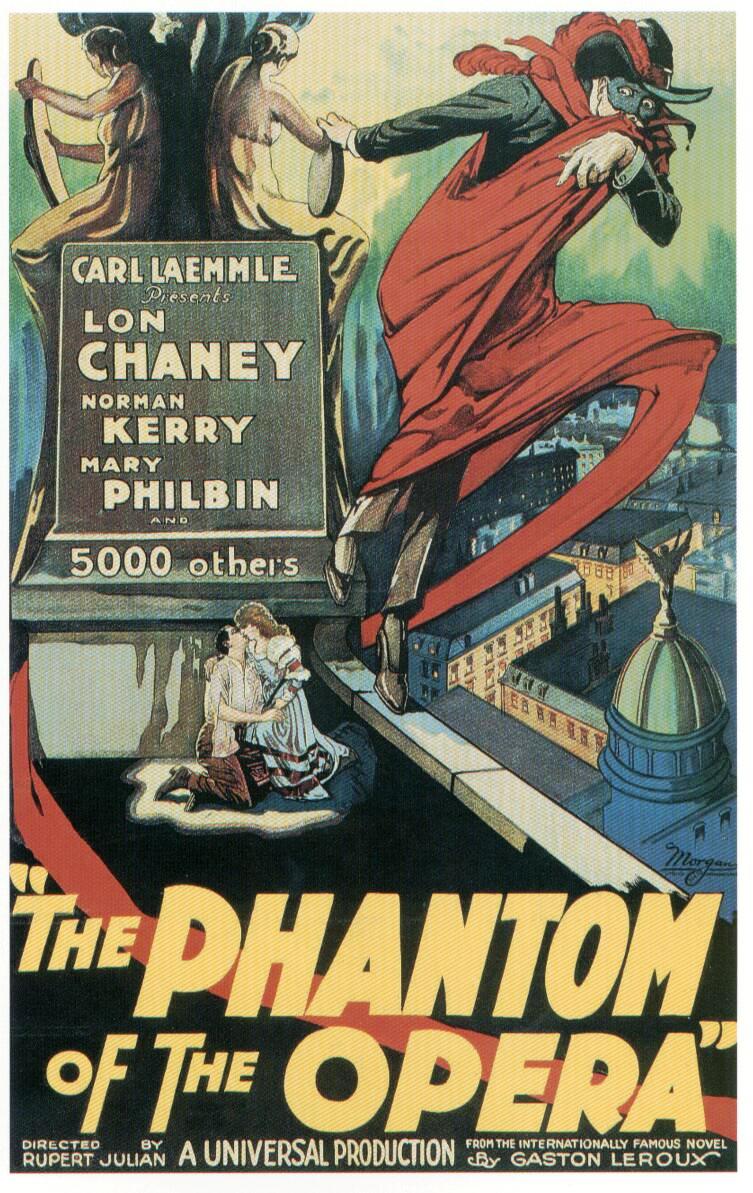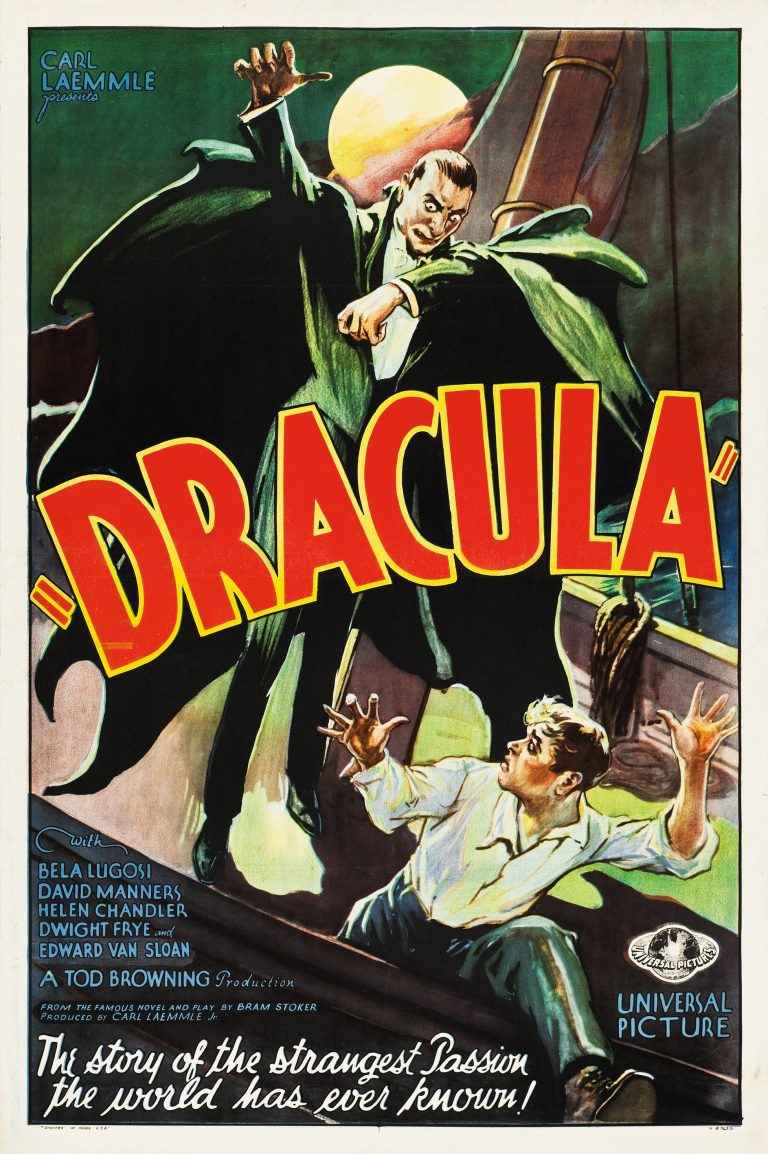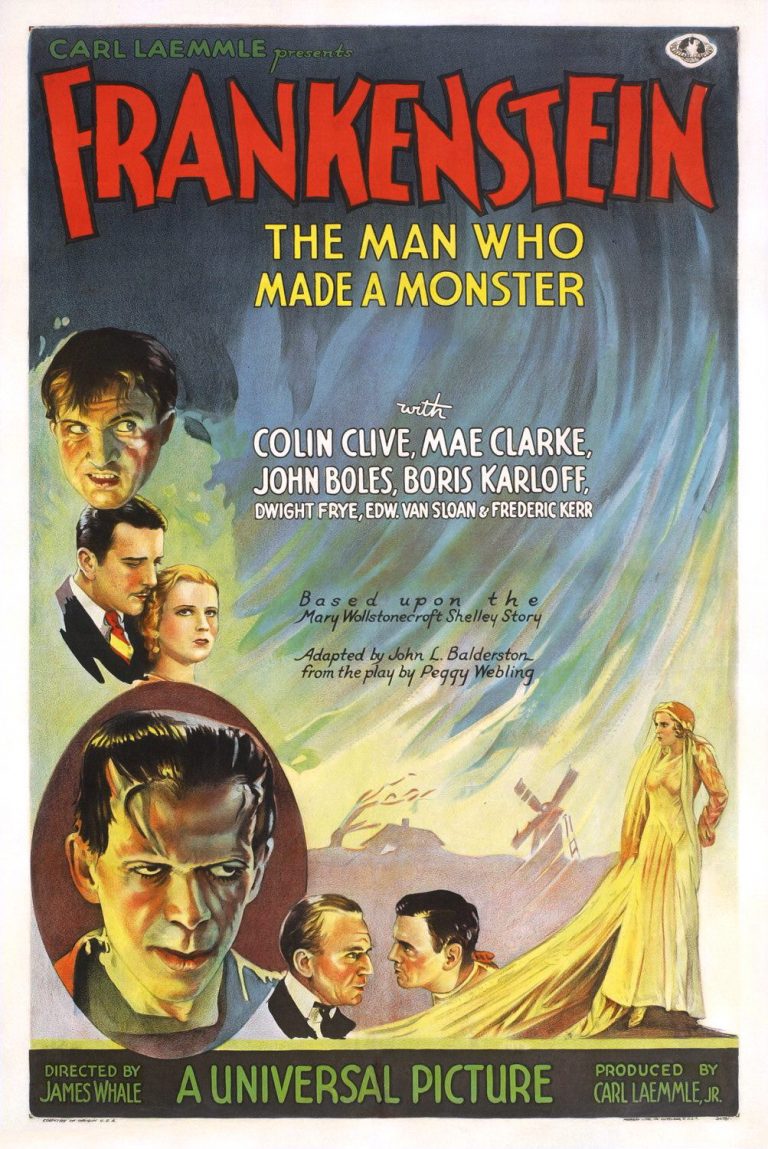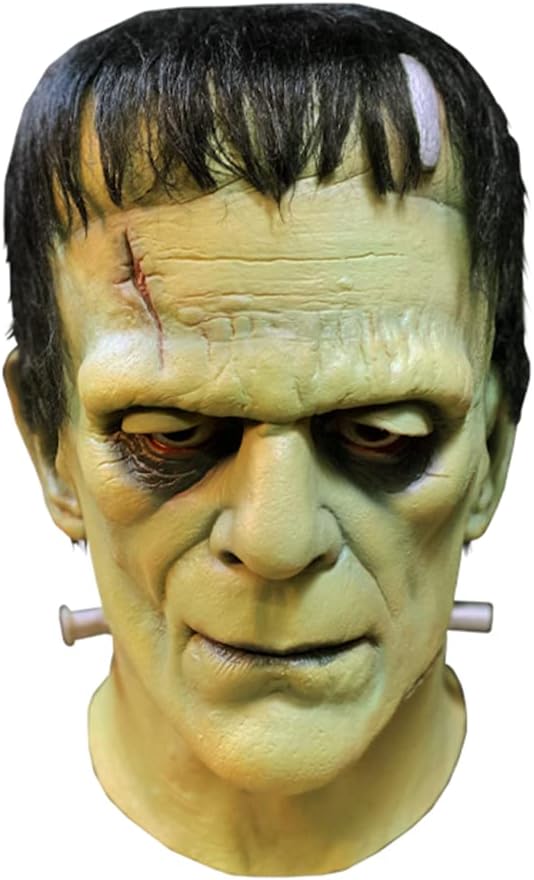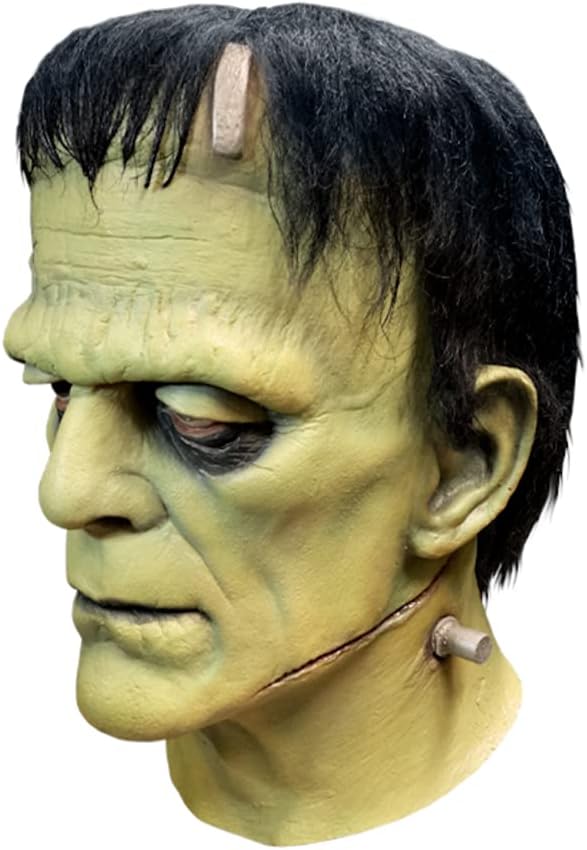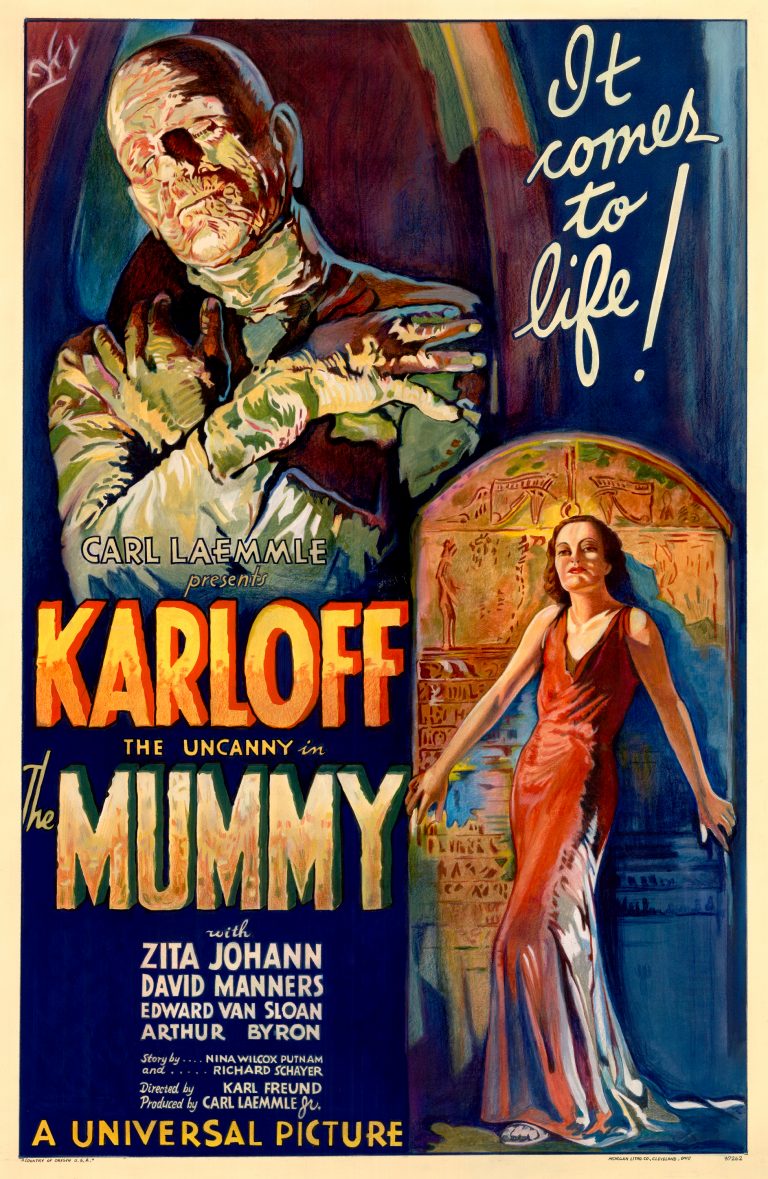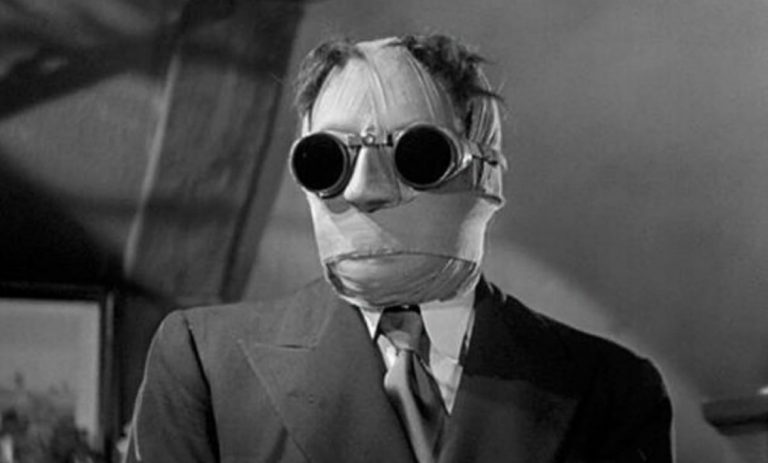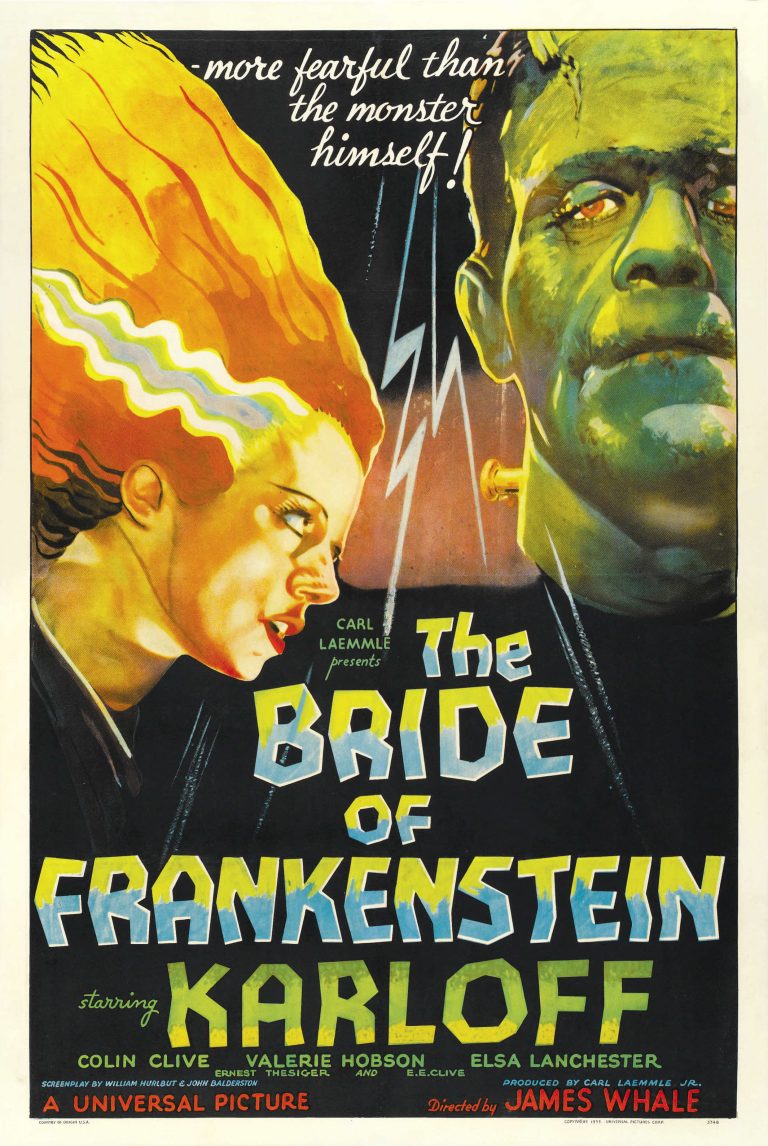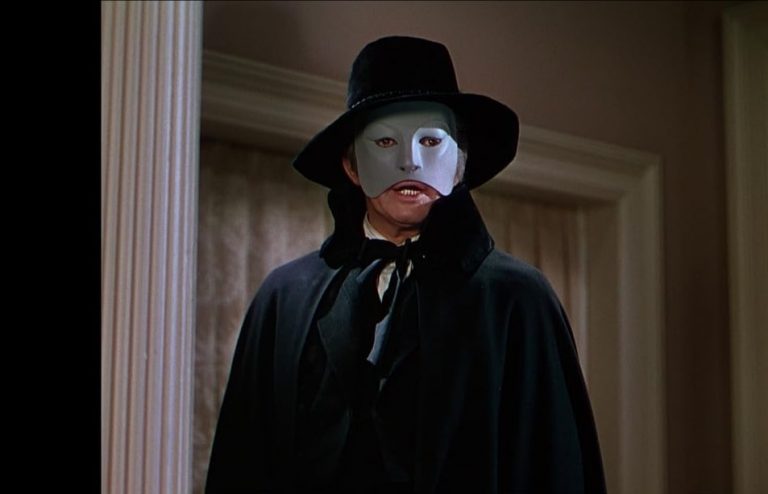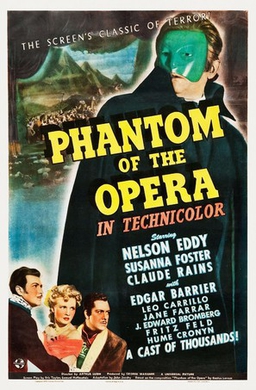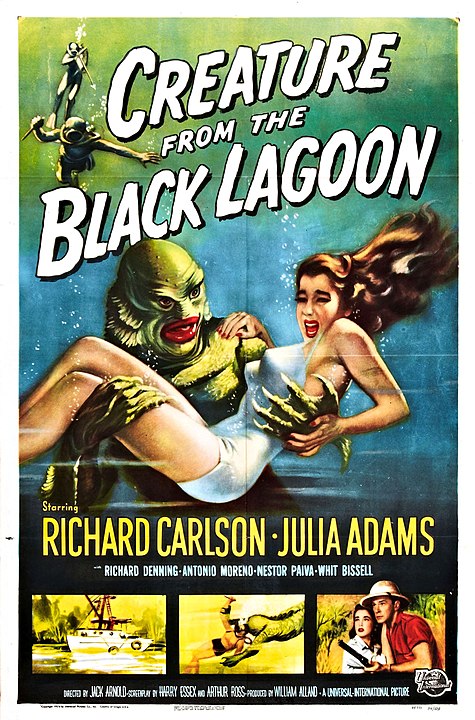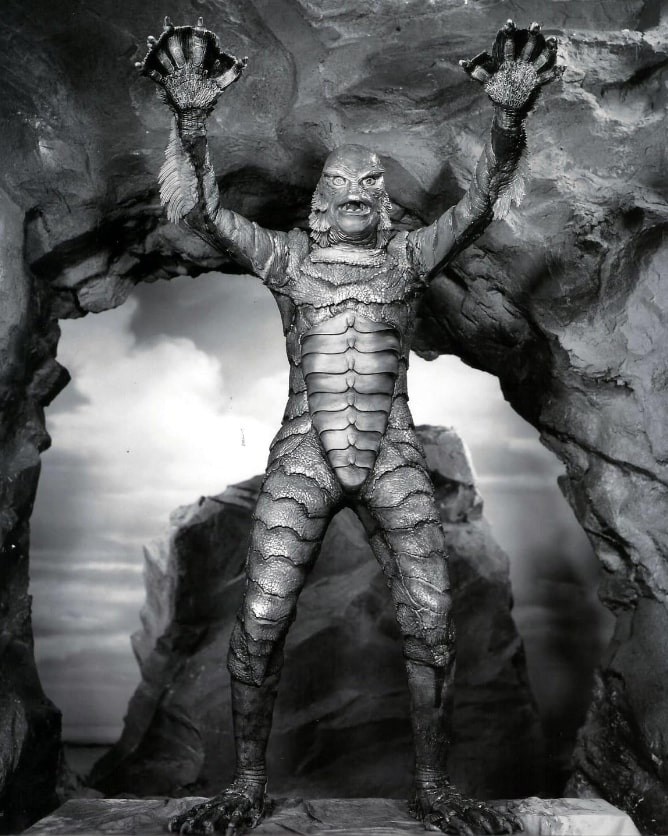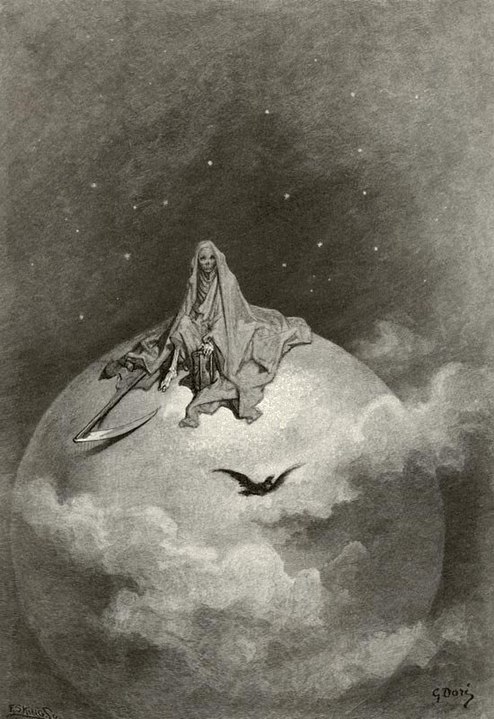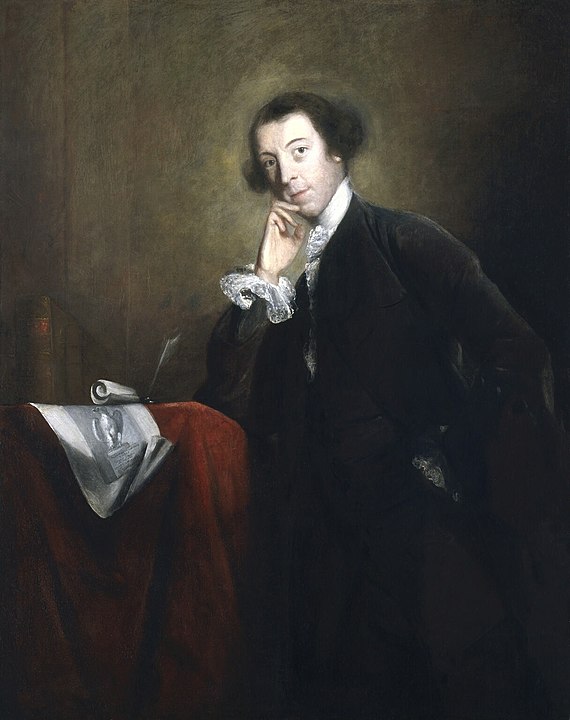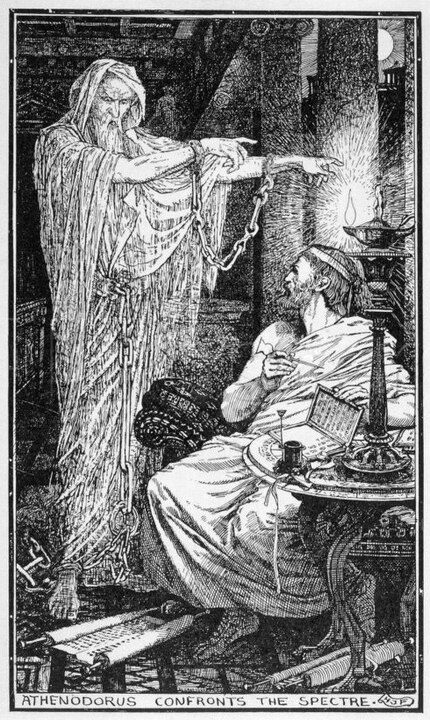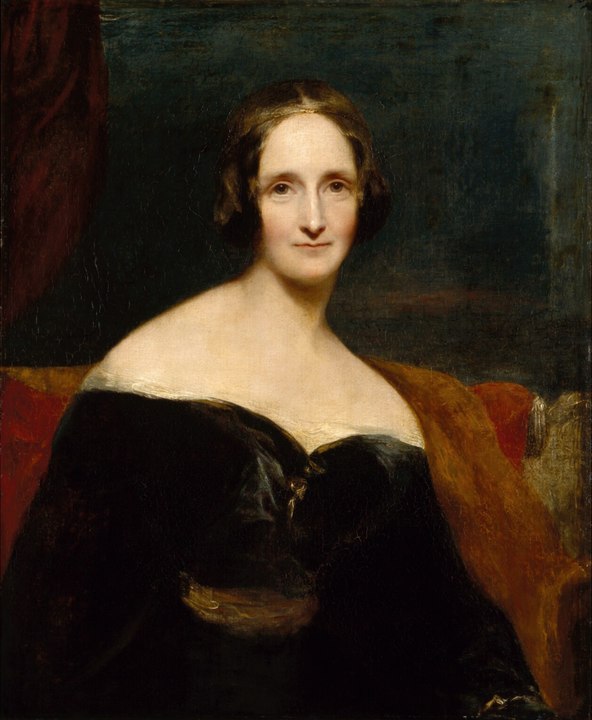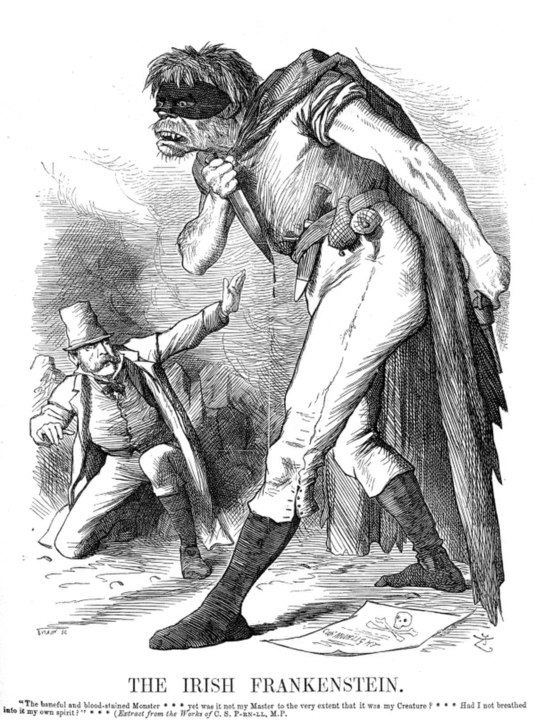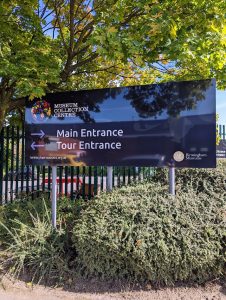
Here are more photos I took on my first visit to the Museum Collection Centre on 17/09/22.
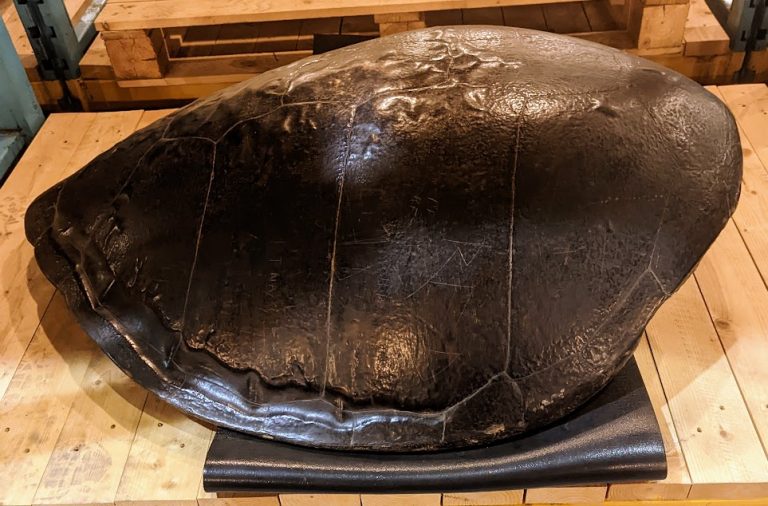
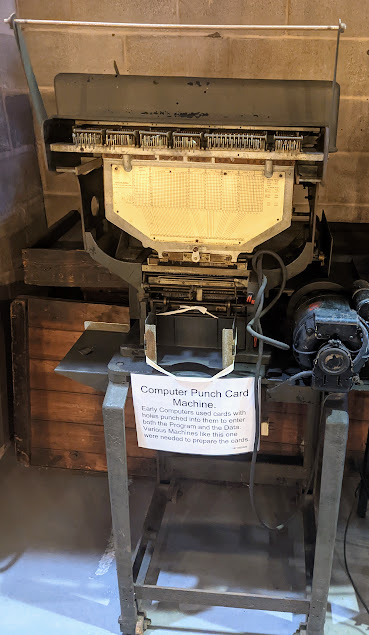
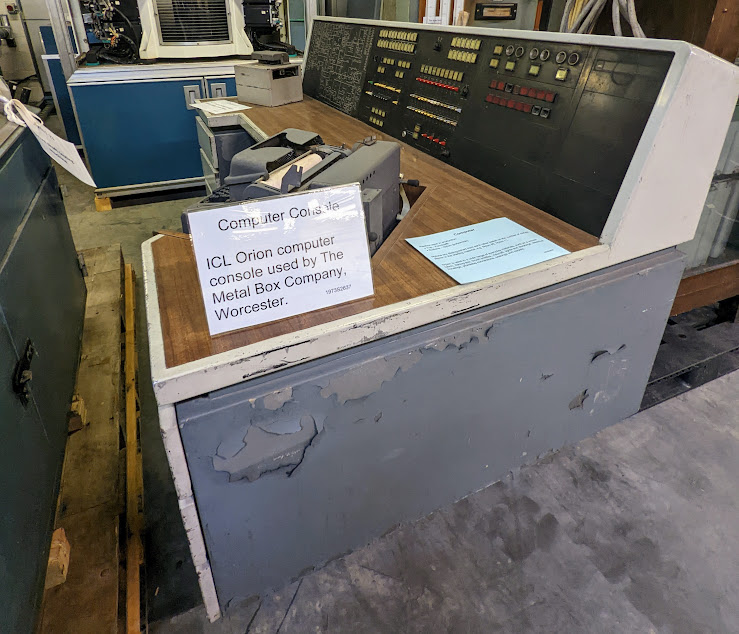
The ICL Orion computer console used by the Metal Box Company, Worcester.
Read about the Orion here.
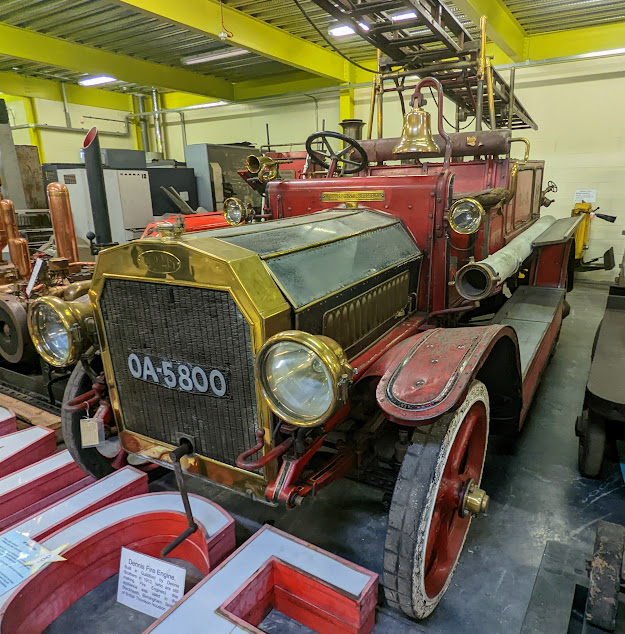
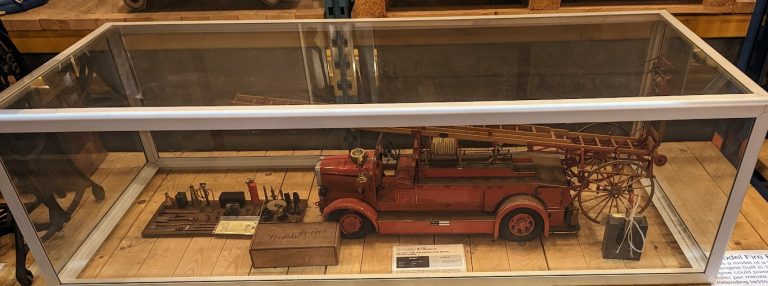
This is a model of a Leyland Cub fire engine built in 1936. The real engine could pump 700 gallons of water per minute and had a 50-foot extending ladder.
Read about Leyland Motors here.
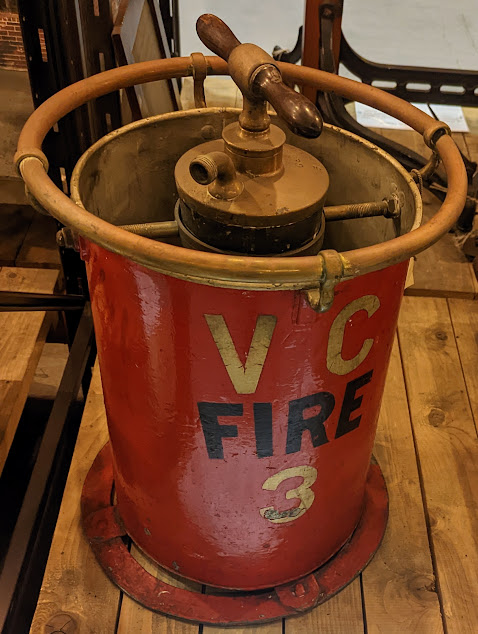
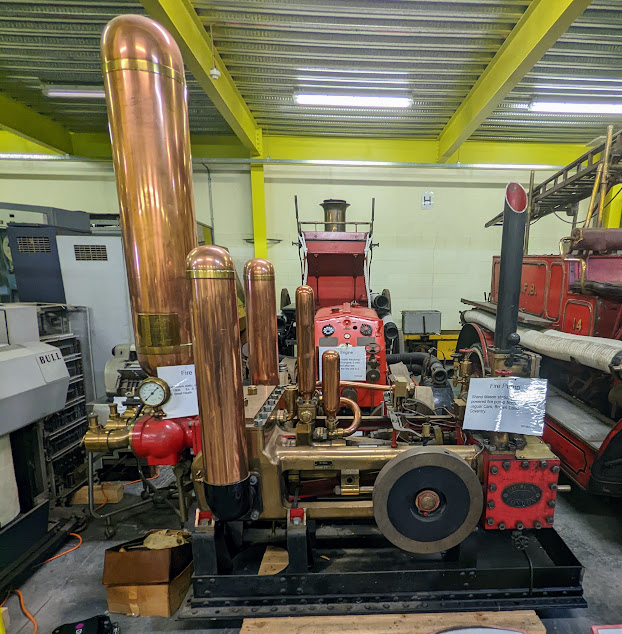
Read about fire pumps here.
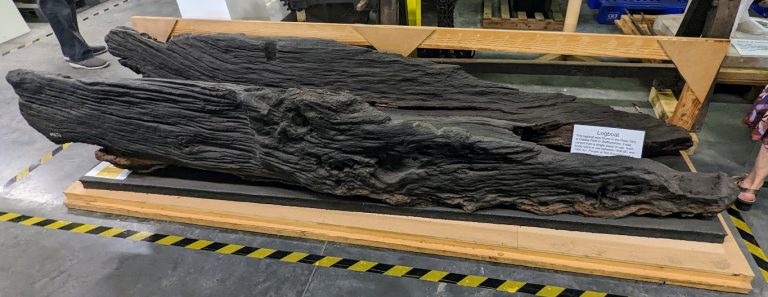
This logboat (also known as a dugout canoe) was found in the River Tern at Oakley Park in Staffordshire. It was carved from a single piece of oak. Such boats were in use between 1600 BC and 1000 AD. People at first thought it was a water trough and this can not be ruled out but the deliberately made holes in the sides suggest a boat is more likely.
Read about logboats here.
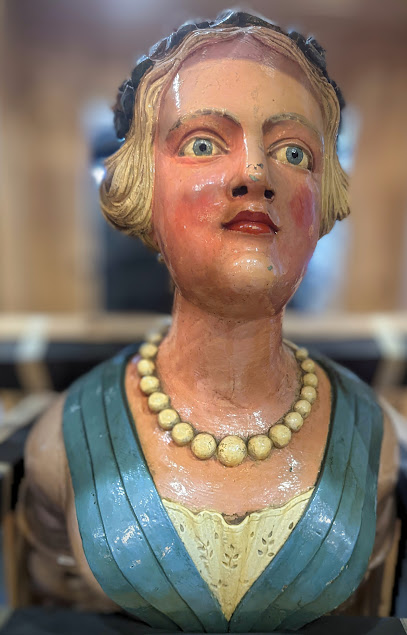
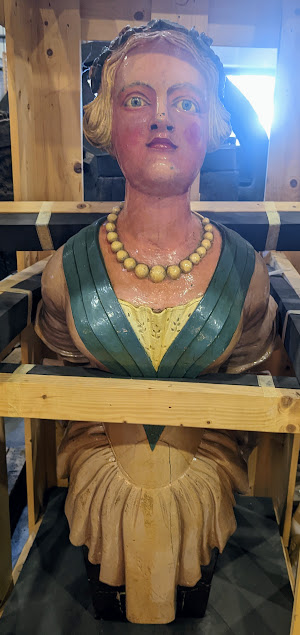
Read more about Figureheads here.
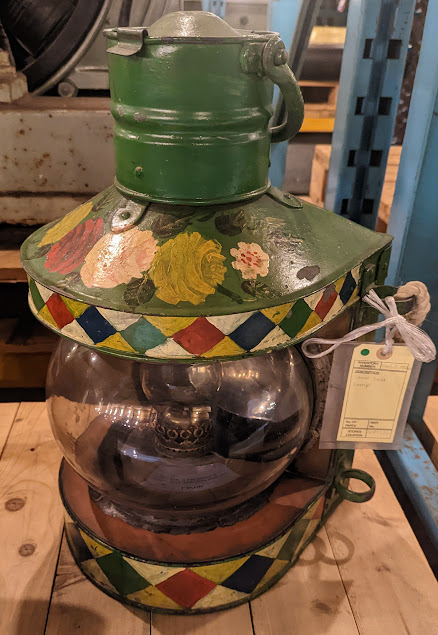
This domed head mast-head lamp is from a canal boat and was painted by Thomas William King.
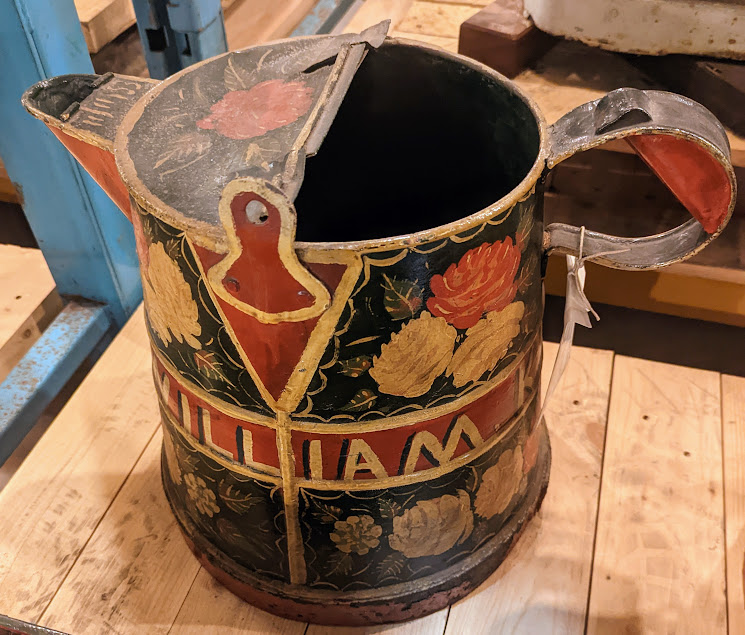
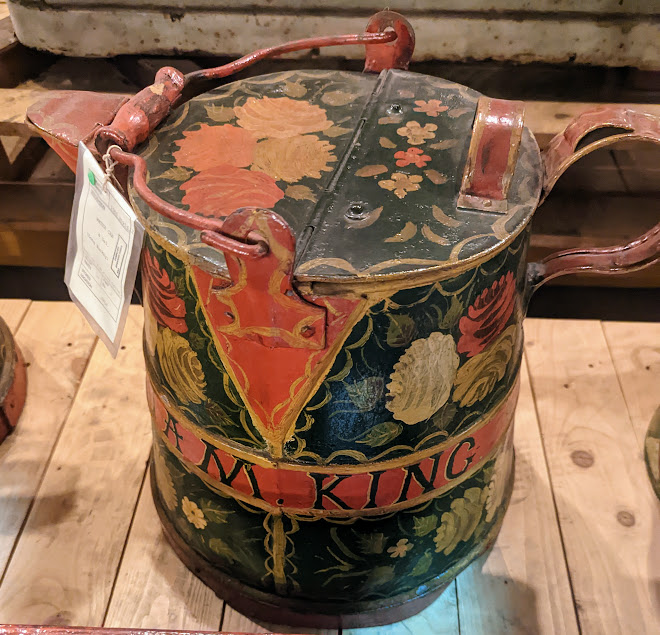
A pair of large metal jugs from a canal boat painted by Thomas William King, circa 1955.
Read about Thomas William King here.

Read about Narrowboats here.
Click here to read about The Allcotts (my family on my Mom’s side) who have had a history with canal boats for over 200 years.
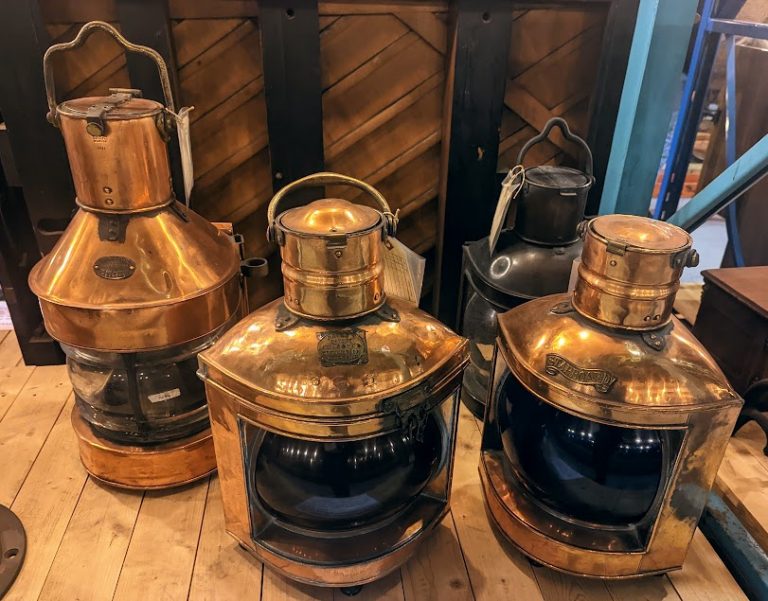
These three copper lamps (port, mast-head and starboard) are from the paddle steamer Lucy Ashton and a steaming light, made in Birmingham.
Read about paddle steamer Lucy Ashton here.
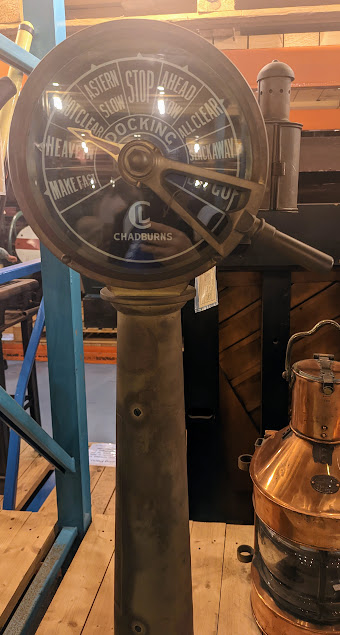
This is used to send instructions to the engine room.
Read about the engine order telegraph here.
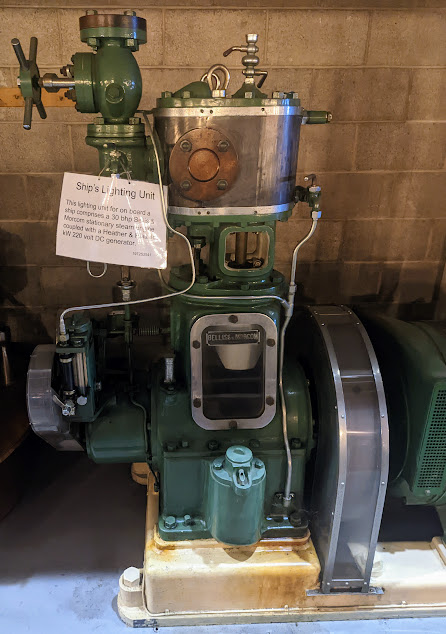

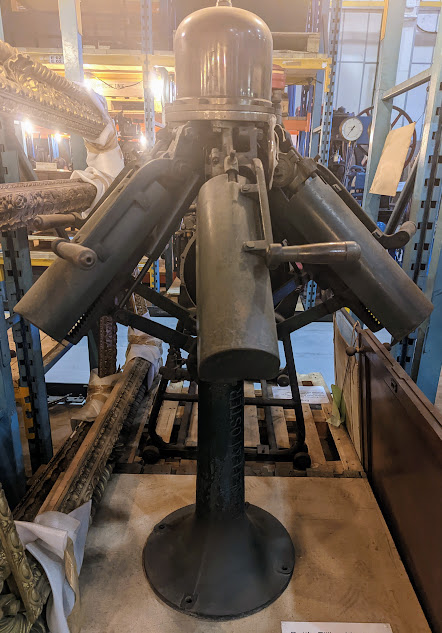
This Barnett and Foster machine was used in 1910 to prepare bottles of Mineral Water for use in the Grand Hotel in Birmingham. Bottling your own water is still a common practice today.
Read about Barnett and Foster here.
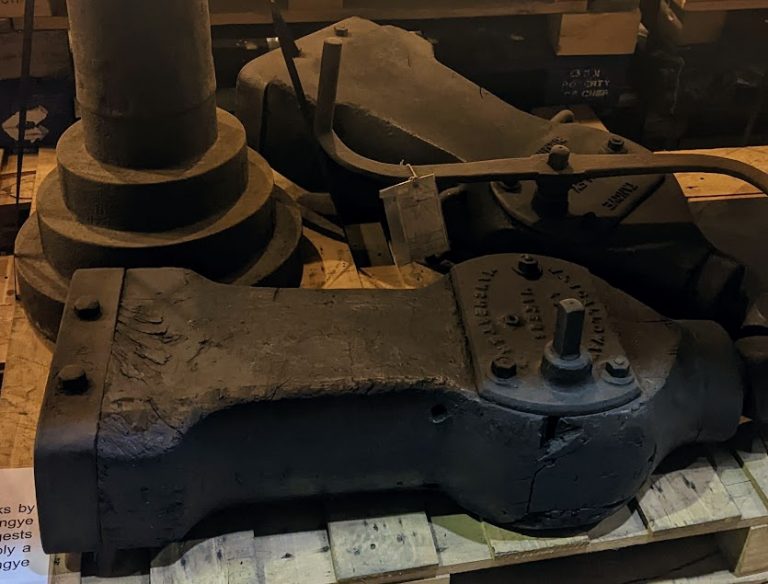
Blog Posts
Local History: The Museum Collection Centre.
The Museum Collection: Photos – Page 1.
The Museum Collection: Photos – Page 2.
The Museum Collection: Photos – Page 4.
The Museum Collection: Photos – Page 5.
The Museum Collection: Photos – Page 6.
The Museum Collection: Photos – Page 7.
The Museum Collection: Photos – Page 8.
Notes And Links
All the above images are copyright of Frank Parker.
Museum Collection Centre on Facebook.
Museum Collection Centre on Twitter.
Birmingham Museums Collection – Find out more about Birmingham’s collections including art and design, human history, natural science and science and industry categories. Each category contains sub-categories full of useful information and great photos.
Birmingham Museums Trust’s Digital Asset Resource – Official website. There is no registration or log-in required to use this website for out-of-copyright collection images Download free Public Domain image files up to 3mb in size with free Creative Commons licenses. You are entitled to unlimited downloads. Also download free Audio Files complete with a license. These can be downloaded for non-commercial use only and attribution is required.
BirminghamMAG – Official YouTube channel. Birmingham Museums and Art Gallery provide world-class museums at the cultural heart of Birmingham.
Birmingham Museums – Official website.
Thinktank: Birmingham Science Museum – Official website.
Birmingham Museum And Art Gallery – Official website.
Aston Hall – Official website.
Blakesley Hall – Official website.
Museum Of The Jewellery Quarter – Official website.
Sarehole Mill – Official website.
Soho House – Official website.
Weoly Castle – Official website.
Wikipedia – Official website. This is a free encyclopedia that anyone can edit.
Made In Oldbury – Official Website. This website explores unique archive materials in Sandwell in relation to local industrial heritage.
Grace’s Guide – Official website. This is the leading source of historical information on industry and manufacturing in Britain. This web publication contains 149,969 pages of information and 235,611 images on early companies, their products and the people who designed and built them.

